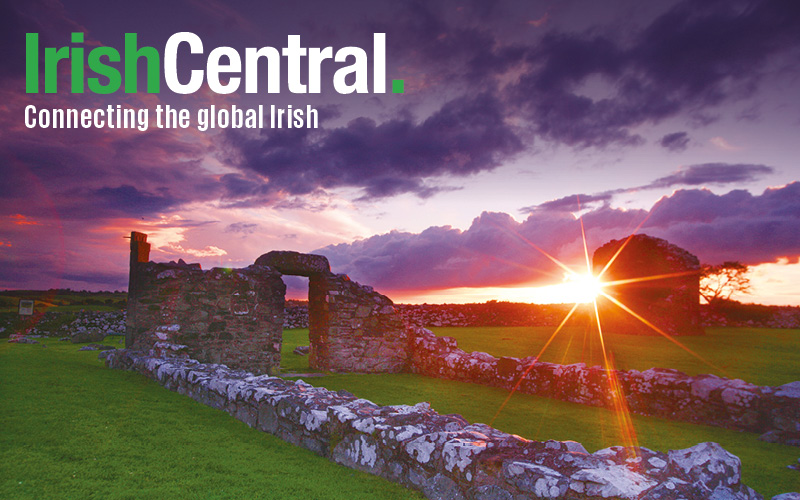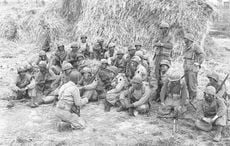As we celebrate one hundred years since the 1916 Easter Rising, we remember the leaders, the brave men who fought from the rebel-captured buildings, those involved in the Rising’s planning, and those who were accidentally caught up in the fighting by simply being in the wrong place at the wrong time.
The commemoration in 2016 has given us a lot more insight into the lives of the rebels in 1916, placing emphasis on those who have long been forgotten in the Rising narrative – the women, the children, the everyday citizens – but all these people still make up just a percentage of the Irish population at the time, not giving us any particular idea of what Irish life was life one hundred years ago and how it compares to 2016.
With thanks to fascinating new data released by the Irish Central Statistics Office, we can now do exactly that, putting our own 21st century lives in comparison with those of our 20th century counterparts.
Without a shadow of a doubt, my life as a 25-year old woman from Co. Kildare is much better in 2016 than it would have been at the time of the Rising.
For a start, if I had had a daughter recently it is far less likely that she would have been called Mary or Bridget compared with the time of the Rising, when 18.8 percent of girls born were so named, according to the 1911 census (closest date for which we have statistics). According to the figures, 63 percent of all baby girls born in 1911 were named using one of the monikers in the top 40 baby names of the time, leaving very little room for variety.
In even better news, in 2016 I am still just a young pup starting out in the world. Whereas by 1911 standards, I would have pretty much reached middle age by this time. In the past one hundred years, the life expectancy of Irish women has soared from 54.1 years old to 82.7 years. Thank goodness!
Although my chances of dying from heart disease and diabetes have increased and there’s a much greater chance of me dying by suicide (possibly because it was less likely for deaths to be recorded as suicide in 1911), the chances of dying from influenza, bronchitis and tuberculosis are extremely low for me, as of 2014.
Of course, my mother also had less to worry about in my first year of life, as the death rate among babies in their first twelves months has dropped from 81 per 1,000 to 3.7 per 1,000 in the past century.
Although I would at least have been capable of writing this piece in 1916 – the rate of illiteracy at the time was only 8.3% – the chances are that I would have been more likely gainfully employed in either agricultural work, along with almost 50 percent of the country, or I would have been among the one in ten people engaged as a domestic servant. In Ireland in 2016, only 5 percent of the population works in agriculture while only a few thousand are employed as domestic servants.
Although there was a 70.7 percent chance I attended national school (elementary school), my education would most likely have ended there, with only 7,000 continuing their education as far as the junior intermediate examination, i.e. the Junior Certificate exams now taken at age 15 by around 60,000 candidates each year.
If I had been born just one county over and could call myself a Dubliner, my housing situation in the capital city could have been one of two extremes. Frances in 1916 would either have found herself (hopefully) among the 22 percent who lived in a large home with ten rooms or more, or (hopefully not) among the 36 percent who lived in a one-room tenement.
As it happens, Frances in 2016 finds herself in a small New York apartment because I was among the 80,900 people from the Republic of Ireland who emigrated between April 2014 and 2015. This compares to just 7,302 emigrants from the whole island of Ireland in 1911.
As an Irish speaker, I would have been among less than a fifth of the population who had this ability in 1911, but am thankfully now joined by a massive increase of two fifths of the population, according to latest census data.
Today there is also just a 60 percent chance that I will marry in a Catholic ceremony and a 33% chance that I will give birth outside of marriage. In 1916, just 2.4 percent of births (reported, it should probably be added) were out of marriage while 92 percent had a Catholic ceremony.
Although I don’t drive, the chances of a 25-year-old owning a car in Ireland are a lot higher in 2016 with 1.9 million private cars registered. This compares to just 10,000 in 1915.
If we make a subtle change to my name and pretend for a moment that I am a Francis, many of these comparisons would remain the same although there was a higher chance that I received the chance to do my Junior Cert in 1916, if still only alongside 6,999 other people.
Middle-aged at 25, 1911 Francis would have lived to an average of 53.6 years old, while I could now boast a much longer life to 78.3 years old.
I would again fall foul of repetitive naming patterns with a 10.3 percent chance of being named John and a 9.4 percent chance of being called Patrick.
With all this in mind, the population of Ireland as a whole has changed quite dramatically in the past century, rising by 46 percent from 3.1 million to 4.5 million. Coupled with a lower death rate, the Ireland of 2016 looks much older and better-educated with greater diversity in names. We are less likely to have a Catholic marriage and more likely to have a baby before we do tie the knot.
Although some may argue that we’re in just as bad a situation paying off money to foreign countries in 2016, the case in 1916 was a whole lot worse, with much of our money going to the British Empire. In 1916, there was nearly £24 million raised in Ireland but only £12.6 million was actually spent in the country while the surplus £11 million went to the British war effort.
I think I’m very happy in 2016, thank you very much.




Comments